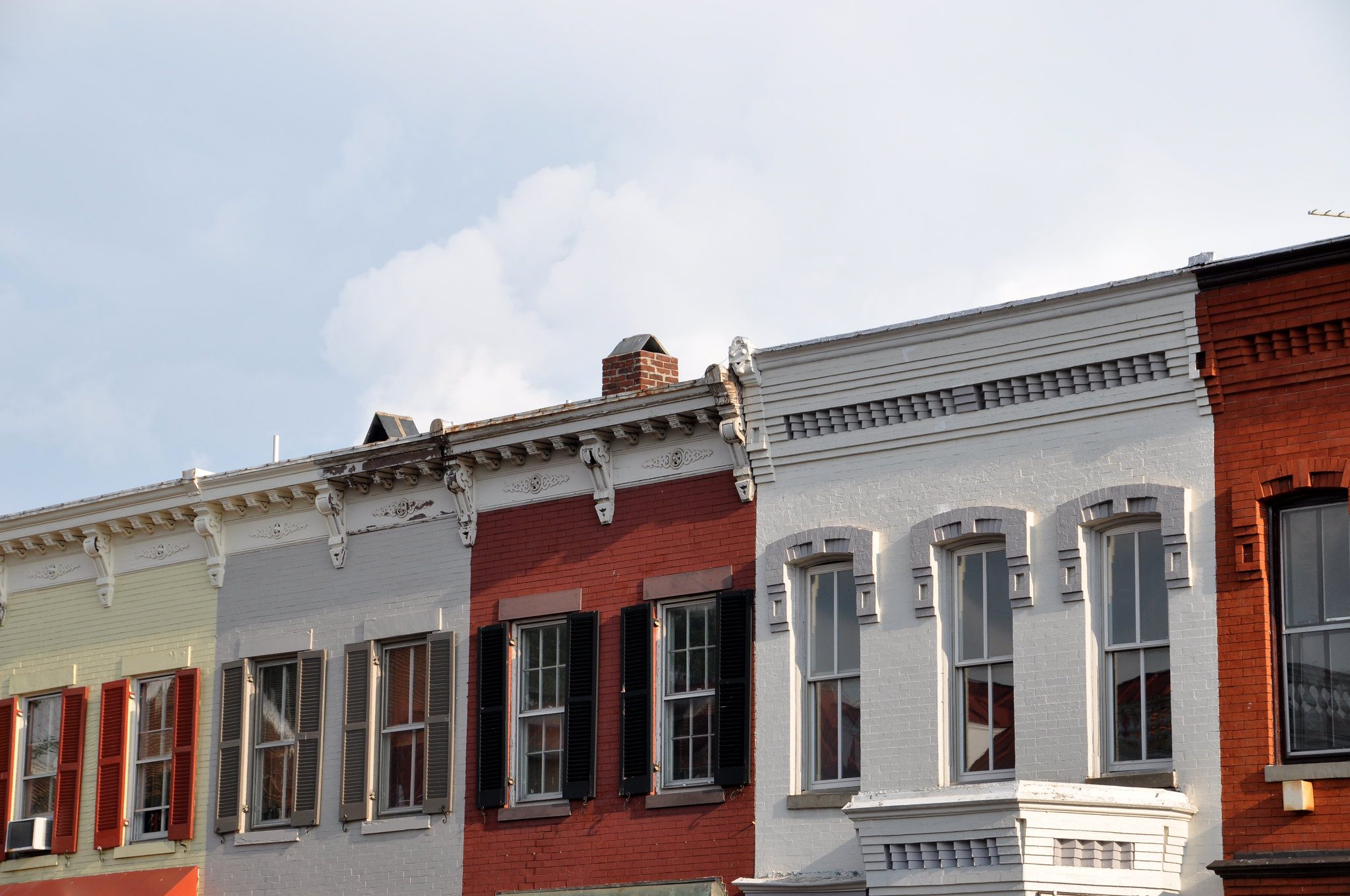
Photo by Kevin Harber via flickr, CC BY-NC-ND 2.0
Americans are experiencing an unparalleled and historic series of crises, in many ways defying words to capture the magnitude of the damage. Beyond the grave health and economic impacts of the COVID-19 pandemic, our nation is tragically divided by a human rights crisis. Due to a long and painful history of institutional racism and the lack of responsive action by many elected leaders, Black Americans are disproportionately suffering once again. Police brutality, acts of inhumane cruelty, and widespread neglect are perpetrated daily in our streets.
Serious policy reforms targeting the elimination of racism within law enforcement agencies and judicial systems are long overdue. However, there is also an urgent simultaneous need for the elimination of racial bias and barriers in our education, health, and housing policies. Anti-Black racism means Black American families are not only at higher risk for homelessness and eviction, making it difficult to shelter in place, they also often remain either excluded outright or acutely disadvantaged in fairly accessing, maintaining (especially during economic crises), and building wealth through homeownership.
Since COVID-19 is affecting Black Americans harder in terms of both health outcomes and employment outcomes, the housing stability of current Black homeowners and the ability of Black households to access homeownership after the pandemic should be top concerns. In 2016, the average net worth of a white family was already nearly 10 times greater than that of a Black family. Without sweeping and radical federal action on housing, this growing racial wealth gap will not only not be reduced, but it will also get substantially worse.
Focusing public and philanthropic resources on shared-equity homeownership models that include active stewardship is one way to advance racial equity in housing in the current moment.
Shared Equity and Stewardship
Shared-equity homeownership is a self-sustaining model that takes a one-time public investment to make a home affordable for a lower-income family and then restricts the home’s sale price each time it is sold to keep it affordable for subsequent low-income families who purchase the home. The model balances wealth-building for families who would otherwise be unable to afford to own a home with preserving the community’s investment.
One notable model of shared-equity homeownership is the community land trust (CLT), an enduring legacy of the civil rights movement, stemming from the struggle of Black leaders in Albany, Georgia, to combat anti-Black racism during the late 1960s. CLTs are nonprofit, community-based organizations created to safeguard collective community stewardship of land. CLT real estate development activities may include commercial and retail, but the model is most often used to ensure long-term housing affordability. A CLT typically acquires land and maintains ownership of it permanently. Homes on that land are sold to prospective homeowners, who all agree to a long-term, renewable lease for use of CLT land, dividing ownership of the home and land instead of a traditional sale. CLTs also sometimes develop rental housing. Because CLTs are community-led, CLT homeowners, tenants, and neighborhood residents have an active role in their governance and decision making. A well-functioning CLT that serves Black households can strengthen Black families, communities, and networks of partners by helping them attain housing justice and withstand the multiple major shocks of an increasingly uncertain world.
Affordable housing stewardship is a unique set of specialized practices that shared-equity programs use, designed to help households generate wealth while balancing long-term protection of local housing subsidy investments. Stewarded affordable homeownership programs work with buyers both before and after they purchase their homes to ensure that they are well-prepared for homeownership, financially responsible, and able to maintain the property. Stewarded programs also protect the subsidy investment by monitoring the physical asset, intervening to support homeowners experiencing financial distress and enforcing program requirements over the long term.
Shared-equity programs are increasingly intentionally serving communities of color, with new large-scale CLTs being inspired, created, and led by leaders of color in locations such as Houston, Texas, and Washington, D.C. Grounded Solutions Network (GSN) is supporting a nationwide effort to accelerate the scale of shared-equity homeownership production.
Why Shared Equity, Why Now?
Stability—A 2011 study of CLT shared-equity homeownership performance during the Great Recession found that conventional homeowners were 10 times more likely to be in foreclosure proceedings than CLT homeowners at the end of 2010 (respectively 4.63 percent in the conventional market versus 0.46 percent in mortgages held by CLT homeowners). The results were based on 3,143 mortgage holders in 62 CLTs across 29 states. Over 200 GSN members today are committed to replicating that outcome by protecting their COVID-affected tenants from eviction; recording and tracking mortgage forbearance agreements; providing anti-eviction housing counseling efforts; proactively exploring the use of shared-equity mortgage refinance options to cure delinquencies for homeowners who have faced a financial or life crisis; and distributing targeted public financial support to keep families in homes using proactive stewardship.
Efficient use of investment—State and municipal governments are reeling from significant losses in revenue and increased spending, and the economic effects of the pandemic are likely to continue for a long time. This means we must choose affordable housing investments that will make the most of each dollar invested. Shared-equity models such as community land trusts and limited-equity co-ops do this. They retain and even grow the effect of the one-time initial public or philanthropic investment through resale price restriction and equity-sharing legal agreements that enable homes to retain their affordability in perpetuity. Shared-equity homes allow multiple families over many years to potentially become first-time homeowners, benefiting from ownership of the same perpetually affordable home without ongoing additional subsidy investments.
Wealth Creation Results—CLTs are highly effective in building wealth for families of color. The share of families of color living in a sample of over 4,000 shared-equity homes (73 percent of which were CLT homes) increased substantially from 13 percent during 1985-2000 to 43 percent during 2013-2018. Shared-equity homeownership performance data from a 2019 Lincoln Institute of Land Policy study, collected over that same period, shows that the majority of lower-income families who participated in shared-equity homeownership were able to use it as a stepping stone to purchasing traditional market-rate homes within a 5- to 7-year period. The data also shows that the median investment made to purchase a shared-equity home was $1,875 and that 6 out of 10 families accumulated at least $14,000 in earned equity upon the sale of their home. Notably, shared-equity sellers are accumulating wealth and experiencing smaller decreases in home values than market-rate sellers during housing market downturns, something that has historically caused large equity losses for Black households in particular.
Black Americans specifically are suffering daily from traumatic emotional, physical, and economic hardships stemming from arguably the most extensive series of crisis events experienced in our nation’s history. Like the admittedly flawed, but nonetheless powerful initiatives of the 1933-39 New Deal, which responded to the Great Depression, an equitable COVID-19 recovery urgently demands national public policies and major financial investments. But we need to make them using a racial equity lens. A new and targeted “Better Deal” must be launched, with a multifaceted federal policy relief initiative centered on the Black community, including a $2 billion to $3 billion investment to expand the availability of shared-equity housing with lasting affordability as a means to close the racial wealth gap. We estimate—using the methodology employed by the National Association of Home Builders—that creating 1 million new homes with lasting affordability over the next decade would generate over $45 billion in annual economic activity and would support 619,000 jobs. Only then will we be able to simultaneously strengthen our economic, health, and housing systems to intentionally benefit Black American families for the first time in history,






A shining example of community commitment to shared-equity home ownership occurred several years ago in New York City. At Penn Station South, a building complex in midtown Manhattan, tenant co-op apartment owners voted to maintain their buildings to a shared-equity standard of minimum increase in value after Penn Station South paid off its New York State subsidized mortgage. The tenant shareholders were under no legal obligation to maintain a limited resale value on their apartments. While these tenants would have made thousands of dollars each by voting to take their apartments to market rent, they voted to remain as a shared-equity complex. While I am not a resident there, as a former New York City resident I am very proud of this example.